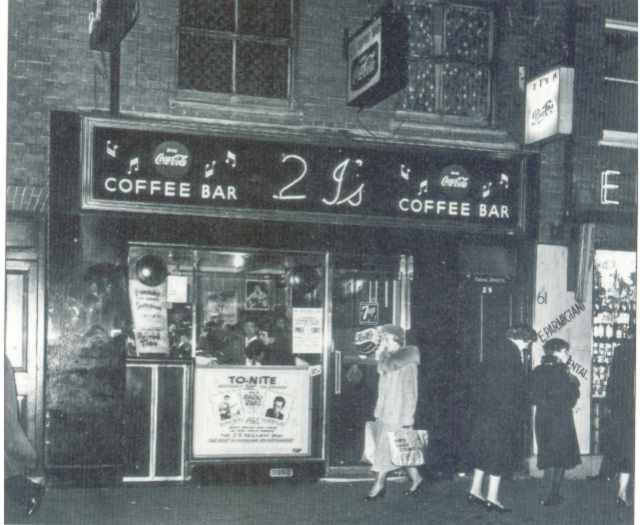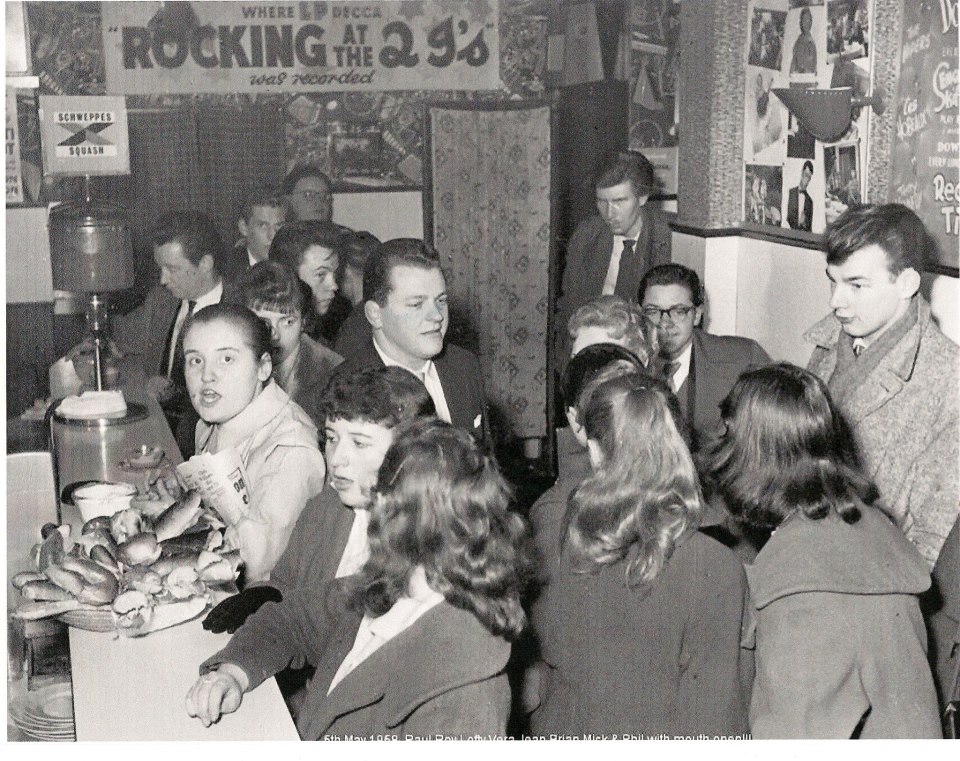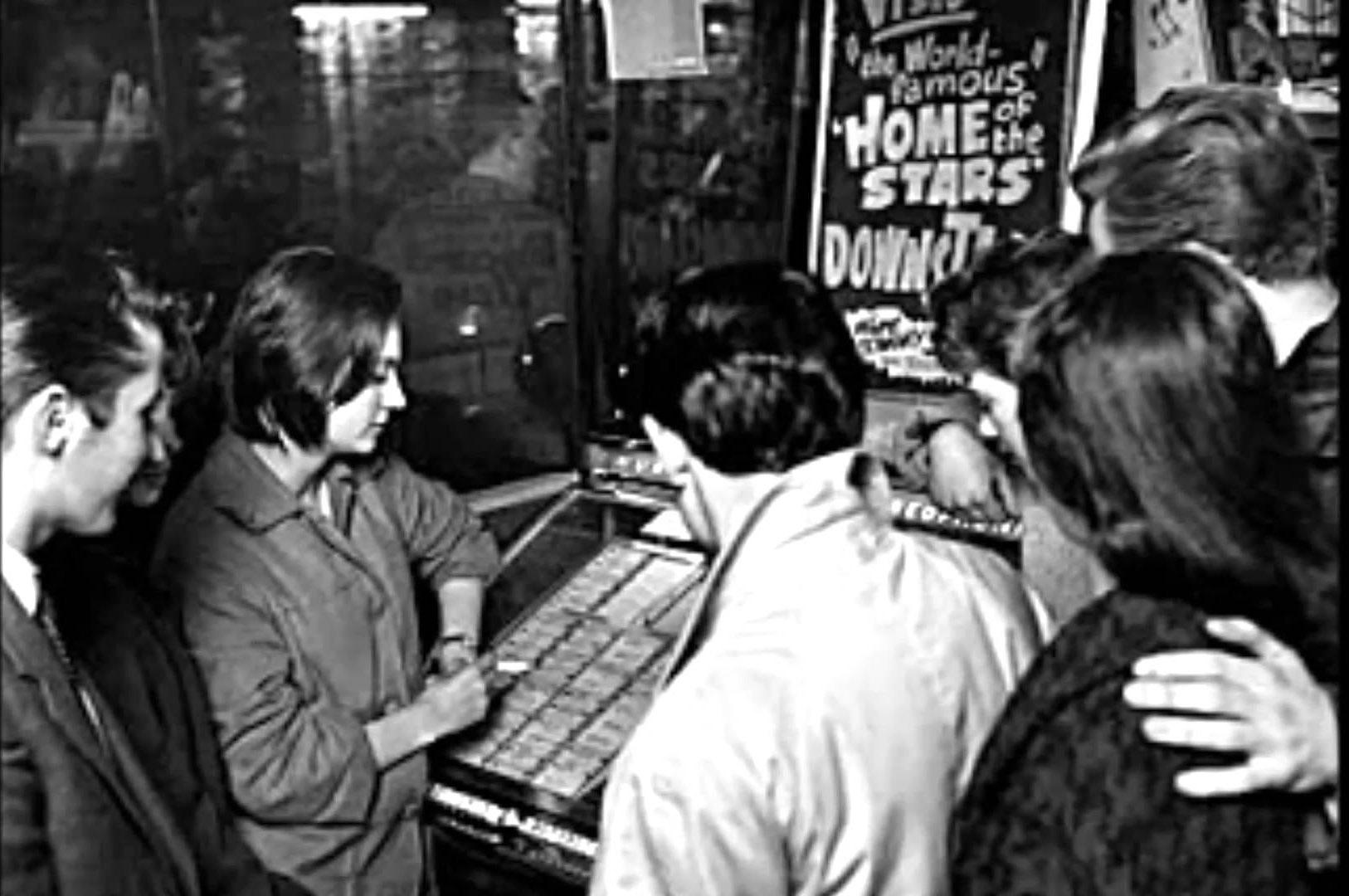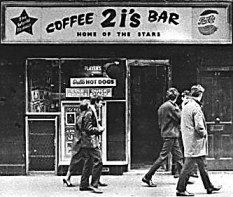| Melody Maker (2) reported
under the headline "Club, Disc Boom as Rock-and-Roll Craze Spreads":
"Rock-and-roll clubs are opening throughout the country and record
sales are soaring." The author went on to say that "Britain's
first full-time rock-and-roll band may hit the road in September, fronted
by former Eric Delany singer, Cliff Lawrence." The band would consist
of a "trumpet, tenor, bass, guitar, piano, and drums." (14 July
1956) The honor, however, would apparently go to former Ronnie Scott drummer,
Tony Crombie who started a tour that August (Melody Maker 4 August
1956: 1). |
| Another aspect of British rock and roll was the contributions of skiffle. Indeed, British skiffle
is a central contributor to British rock and roll, as Melody Maker columnist, Jack Payne comments that the "huge appeal [of skiffle] lies in the fact that a large proportion of these audiences are Rock-'n'-Roll
fans. ... For does not skiffle music share three distinctive traits with
Rock-'n'-Roll--an exaggerated use of guitars, a heavy exaggerated off-beat,
and an exaggerated style of mouthing the words?" ("Showtalk,"
19 January 1957, p. 5). |
| The British Musicians' Union (MU) and their trans-Atlantic counterpart, the American Federation of
Musicians (AFM), had a long-standing agreement about musician exchanges.
Wary of the economic might of the US and protective of British talent,
the MU (in an arrangement with the Queen's immigration service) would
allow only as many American acts into the UK as were British acts accepted
into the US. Of course, this arrangement would come back to haunt British
musicians in 1964, but in the late 1950s, the arrangement helped to foster
British talent. |
| With the emergence of performers
like Bill Haley and especially Elvis Presley, British teens looked for
something closer to home. British promoters scoured London's coffee bars
for young performers to fill a demand for pop stars. Coffee houses had
been centers of London life since the late seventeenth century and in
the post-war years, British youth made them their venues. The most notorious
of these was the 2i's (or 2I's or 2Is) in 59 Old Compton Street in Soho. Drummer, Carlo
Little describes the establishment in the late 1950s this way: |
The 2i's
was a coffee bar upstairs with a basement what held about fifty people…,
and that was really pushin' it. A very small place underneath with a
tiny little stage…, very small, you know, maybe 25 foot by ten
foot by twelve foot. You got about fifty people in there and it was
hot. … It was just concrete walls. Great! [The sound] bounced all
the way around. But the crowd helped soak it up. … The upstairs
was just a coffee bar with chairs and a juke box. … They might
have had a speaker from the downstairs going up …, but it might
have been one of those little jukeboxes on the wall, like you put your
money in… and selected your stuff. That was quite a popular place
in the fifties and the early sixties…. Just coffee and soft drinks.
[The stage] took about a fifth of the [downstairs] room up…, at
least 20% of the room was the band. (Interview 30 March 2000) |
 |
| With the explosion of rock
and roll in the United States, and particularly the domination of that
genre by Elvis Presley, British agents sought an English Elvis for their
market. In August, Ronnie Scott's drummer Tony Crombie formed a band (tenor
saxophone, piano, bass, drums, and a vocalist) (Melody Maker, "Crombie
Forms Rock and Roll Unit," 4 August 1956, pp 1-2). However, their
shows appear to have been safe compromises. A review of a show in early
September in Portsmouth describes the exiting audience members as "sober
and sedate, older folk smiling faintly, the younger element contented,
perhaps even sated" (Melody Maker, "Crombie Rocks,"
p. 9, 15 September 1956). Two other bands soon form: The Rock 'n' Roll
Sinners (formed by another Ronnie Scott sideman, singer Art Baxter, in
October) and The Rockin' Horses (formed by Don Sollash for performances
in November) (Melody Maker, "New Rockin' Horses Band Gets
Rolling: Don Sollash Leads," 13 October 1956, p. 2). |
 |
| In an interview, the agent
for the above bands, Jeff Kruger, says "Since you were last here
three months ago, the income of this office has trebled—and it's all
due to Rock 'n' Roll." Indicating that Tony Crombie's Rockets have
earned £20,000 already, he complains that the media are boycotting
the genre. "The BBC and ITV can't see further than the ends of their
noses. Rock 'n' Roll has an enormous following here, but neither will
give it a showing. They are just a bunch of stuffed shirts. They and the
cinema managers who are scared of the name are not giving the music a
fair deal." (Bob Dawbarn, "Rock-'n'-Roll Pays Off," Melody
Maker, 8 December 1956, p. 3.) |
 |



